FAQ - Advanced Bathroom Queries
Does Dog Poop Break Down in Water
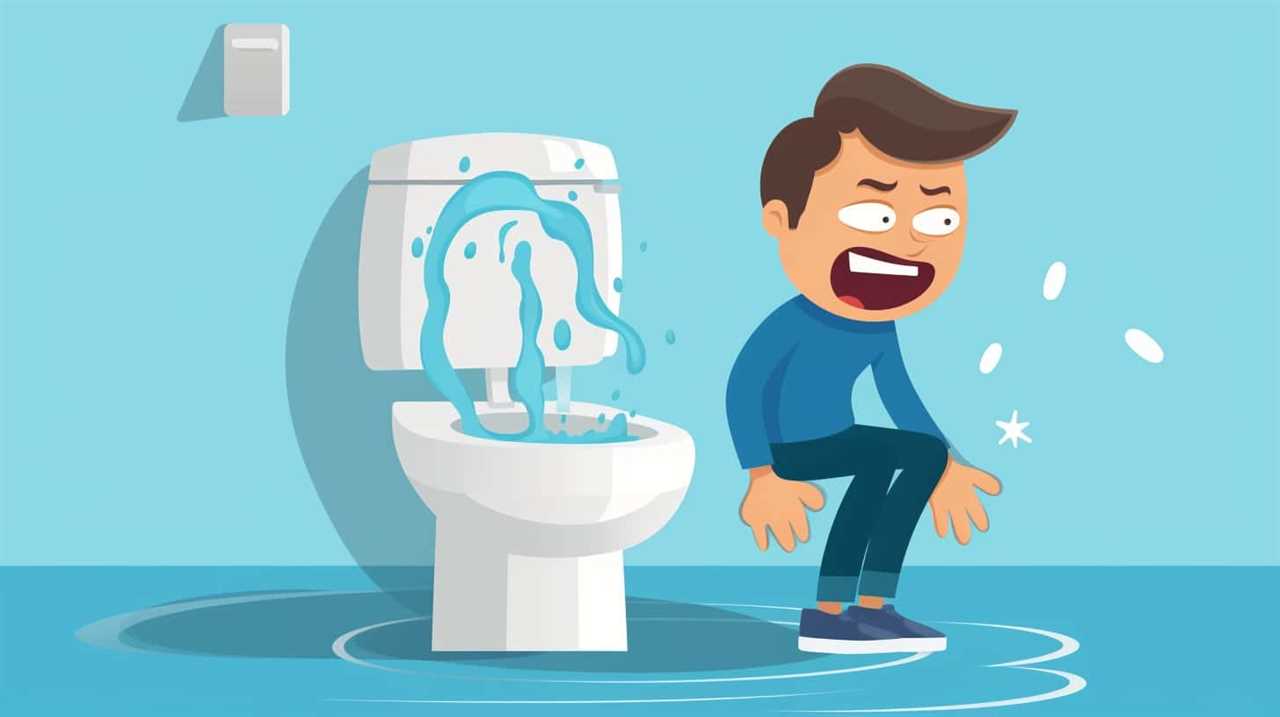
Every dog owner knows the disappointment of spotting their beloved pet’s droppings tarnishing their perfect lawns. But what about when those droppings find their way into water? Does it decompose, or does it persist for a long time?
In this article, we will delve into the scientific composition of dog poop, the impact of water on its decomposition, and the environmental consequences of its presence. By understanding the fate of dog poop in water, we can strive for better disposal methods and ensure a cleaner environment for all.
Key Takeaways
- Dog poop is a complex mixture of organic and inorganic substances, including proteins, carbohydrates, fats, and minerals.
- Microbial activity and enzymes released by microorganisms are responsible for breaking down the organic matter in dog poop.
- Moisture and water play a crucial role in softening dog poop, promoting microbial decomposition, and facilitating nutrient transportation and gas exchange during decomposition.
- Temperature and the presence of other organic materials can affect the rate of decomposition, with higher temperatures generally accelerating decomposition and fluctuations in temperature throughout the year impacting decomposition rates.
The Composition of Dog Poop
The composition of dog poop includes various organic and inorganic substances. It’s a complex mixture that undergoes a series of chemical reactions and microbial activity.
The chemical composition of dog poop consists of proteins, carbohydrates, fats, and minerals, which are derived from the dog’s diet. These organic compounds provide the necessary nutrients for the growth and metabolism of microorganisms present in the feces.

Microbial activity plays a crucial role in breaking down the organic matter, releasing enzymes that degrade complex molecules into simpler ones. This decomposition process helps to reduce the volume and odor of dog poop over time.
However, the exact composition of dog poop can vary depending on factors such as diet, health, and individual metabolism. Understanding its chemical composition and the role of microbial activity is essential to comprehend the subsequent section on the impact of water on dog poop.
The Impact of Water on Dog Poop
When water comes into contact with dog poop, it can have a significant impact on the decomposition process. The presence of moisture influences the microbial decomposition of dog poop in several ways:
- Moisture provides an ideal environment for bacteria and other microorganisms to thrive. These microorganisms break down the organic matter in the poop, aiding in its decomposition.
- Water helps to soften the dog poop, making it easier for microbial activity to occur. This accelerates the decomposition process.
- Additionally, moisture promotes the release of enzymes from microorganisms, which further break down the poop into simpler compounds.
- Water also plays a crucial role in transporting nutrients and facilitating the exchange of gases during microbial decomposition.
Understanding the impact of moisture on dog poop decomposition is essential for managing waste effectively and maintaining cleanliness in our surroundings.

Factors Affecting Decomposition in Water
Now, let’s discuss the factors that can affect the decomposition of dog poop in water.
Two important factors to consider are temperature and the presence of oxygen.
Temperature plays a crucial role in decomposition, as higher temperatures can accelerate the breakdown process.
Additionally, the presence of oxygen underwater can also impact decomposition rates, as oxygen is necessary for the activity of certain bacteria that aid in decomposition.

Temperature’s Effect on Decomposition
As we explore the factors affecting decomposition in water, it’s important to consider the impact of temperature. Temperature plays a crucial role in the breakdown of organic matter, such as dog poop, in water.
Here are four key points to understand its effect on decomposition:
- Temperature affects the rate of decomposition: Higher temperatures generally accelerate the decomposition process, while lower temperatures slow it down.
- Optimal temperature range: Microorganisms responsible for decomposition thrive within a specific temperature range, typically between 25-40 degrees Celsius.
- Effect on pH: Temperature can influence pH levels in water, which in turn affects the decomposition rate. Extreme temperatures can alter the pH and impede the activity of microorganisms.
- Seasonal variations: Fluctuations in temperature throughout the year can impact the decomposition rate, with faster decomposition occurring during warmer seasons.
Presence of Oxygen Underwater
Our understanding of the factors affecting decomposition in water is deepened by considering the presence of oxygen underwater.
Oxygen availability plays a crucial role in microbial activity, which is responsible for the breakdown of organic matter.

In aquatic environments, oxygen is dissolved in the water, allowing aerobic bacteria to thrive and carry out decomposition processes.
These bacteria utilize the dissolved oxygen to break down organic compounds into simpler molecules, such as carbon dioxide and water.
However, the amount of oxygen available can vary depending on factors such as water temperature, depth, and the presence of other organic materials.
In oxygen-rich environments, decomposition occurs more rapidly due to the increased microbial activity.

Conversely, in oxygen-depleted conditions, decomposition may be slower or even halted, leading to the preservation of organic matter.
Understanding the interplay between oxygen availability and microbial activity is essential for comprehending the decomposition processes that occur in water environments.
How Long Does Dog Poop Take to Break Down
When examining the decomposition timeline of dog poop, it’s important to consider various factors that influence the process. Factors such as environmental conditions, the composition of the feces, and the presence of microorganisms can all affect how long it takes for dog poop to break down.
Additionally, the environmental impact of decomposition should be taken into account, as dog waste contains harmful bacteria and parasites that can contaminate water sources and pose a risk to human and animal health.

Understanding the timeline and environmental implications of dog poop decomposition can help inform responsible waste management practices.
Decomposition Timeline of Dog Poop
Dog poop typically takes several months to break down completely, depending on various factors such as environmental conditions and the size of the stool. The decomposition rate of dog poop is greatly influenced by microbial activity, which refers to the activity of microorganisms that break down organic matter.
Here are some key factors that affect the decomposition timeline of dog poop:
- Environmental temperature: Warmer temperatures generally accelerate decomposition by increasing microbial activity.
- Moisture levels: Adequate moisture is essential for microbial activity and the breakdown of dog poop.
- Oxygen availability: Microorganisms require oxygen to carry out decomposition processes effectively.
- Stool size: Larger stools take longer to decompose due to their higher organic matter content.
Understanding the decomposition timeline of dog poop can help pet owners and environmentalists manage waste effectively and maintain a clean and healthy environment.

Environmental Impact of Decomposition
Continuing from the previous subtopic, it’s important to consider the environmental impact of dog poop decomposition and how long it takes for it to break down. Proper disposal methods are crucial in preventing the negative consequences of dog poop on our ecosystems, particularly on aquatic ecosystems.
When dog poop isn’t disposed of properly, it can contaminate water sources, introducing harmful bacteria and parasites. This contamination can lead to the degradation of water quality and the disruption of aquatic ecosystems.
The time it takes for dog poop to break down depends on various factors such as temperature, moisture, and the presence of oxygen. In ideal conditions, it can take several months for dog poop to fully decompose.
Therefore, responsible pet owners should always use appropriate methods for disposal to minimize the impact on our environment, especially our precious aquatic ecosystems.
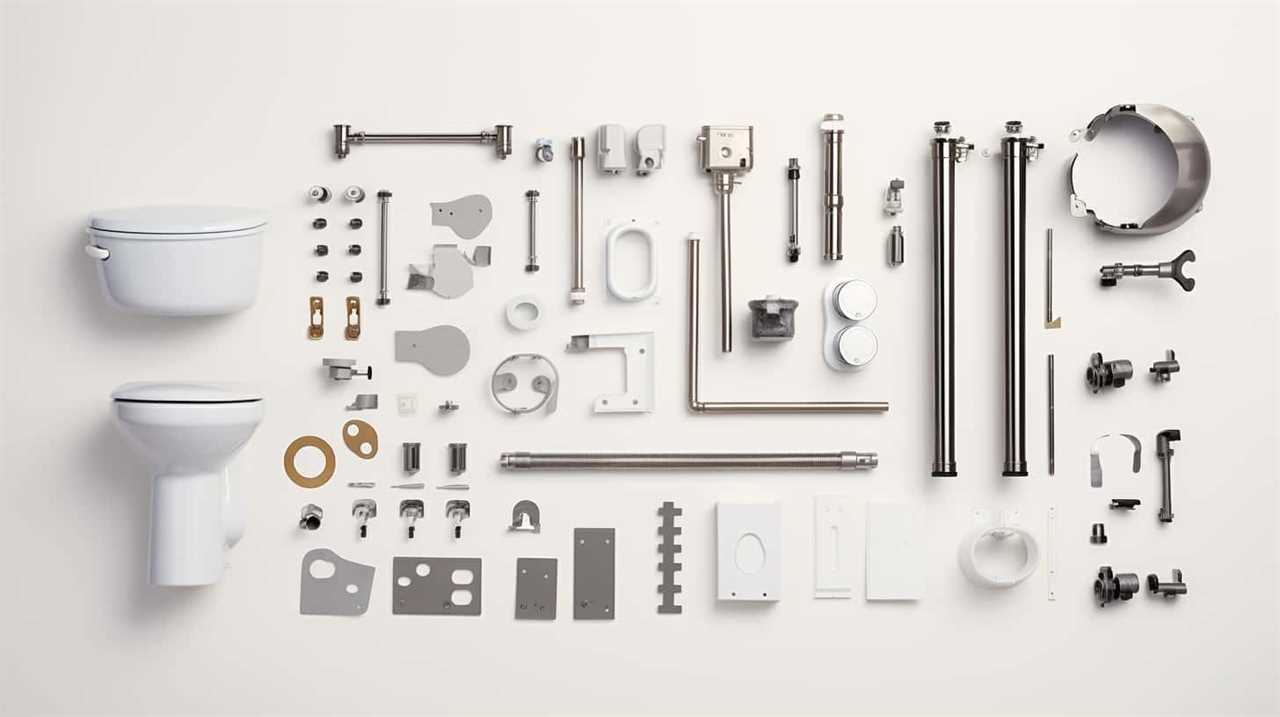
Environmental Consequences of Dog Poop in Water
In our study, we explored the detrimental effects of dog poop on the environment when it enters water bodies. Dog poop in water can lead to water contamination, posing various health hazards.
Here are some key consequences to consider:
- Microbial contamination: Dog feces contain harmful bacteria, such as E. coli and Salmonella, which can contaminate water and increase the risk of waterborne diseases.
- Nutrient enrichment: Dog waste is rich in nutrients like nitrogen and phosphorus. When it enters water bodies, it can trigger excessive growth of algae, leading to oxygen depletion and harming aquatic life.
- Altered ecosystems: The presence of dog poop can disrupt the balance of aquatic ecosystems, affecting the abundance and diversity of organisms.
- Recreational impacts: Contaminated water bodies can pose risks for swimmers, kayakers, and other recreational users, potentially causing infections or illnesses.
Understanding these environmental consequences highlights the importance of proper dog waste disposal and the need for effective measures to prevent water contamination.
Methods for Proper Disposal of Dog Poop
One effective method for proper disposal of dog poop is to bury it in a designated area. Proper disposal techniques are essential to prevent the spread of diseases and minimize the environmental impact of dog waste.

Burying dog poop in a designated area helps to contain the waste and prevent contamination of water sources. It’s important to choose an appropriate location for burial, away from water bodies and vegetable gardens. Dig a hole that’s at least 6-8 inches deep and place the waste in it. Cover the hole with soil, ensuring that the poop is completely buried. This method promotes decomposition and minimizes odor.
However, for those seeking eco-friendly alternatives, composting dog waste with appropriate methods can be considered.
Conclusion: Understanding the Fate of Dog Poop in Water
To understand the fate of dog poop in water, we need to consider its potential impact on the environment.
When dog poop ends up in bodies of water, several factors come into play that affect its decomposition. These factors include the presence of oxygen underwater, which is essential for the breakdown of organic matter. Without oxygen, decomposition slows down significantly.

Additionally, the temperature of the water can influence the rate of decomposition, with warmer water generally promoting faster breakdown. The size and composition of the feces can also affect decomposition, with smaller and more easily digestible particles breaking down more quickly.
Lastly, the presence of bacteria and other microorganisms in the water can contribute to the decomposition process.
Frequently Asked Questions
Can Dog Poop Be Safely Flushed Down the Toilet?
Flushing dog poop down the toilet is not recommended due to potential clogging issues and the environmental impact. Proper dog poop disposal methods, such as bagging and disposing in the trash, are more appropriate.
Does Dog Poop Break Down Faster in Fresh or Saltwater?
Dog poop decomposition is influenced by water conditions. Freshwater provides a more favorable environment for breakdown due to lower salinity levels. Understanding this process is crucial for managing the environmental impacts of dog waste.

Are There Any Health Risks Associated With Dog Poop in Water?
Waterborne diseases can result from water pollution caused by dog poop. These health risks include bacterial infections and parasites. It is crucial to properly dispose of dog waste to prevent contamination and safeguard public health.
What Are the Best Practices for Cleaning up Dog Poop Near Bodies of Water?
Cleaning methods for dog poop near bodies of water should prioritize removal and proper disposal. Leaving it can lead to contamination, which poses environmental risks. It is important to understand the potential impact and take responsible actions.
How Does Dog Poop in Water Affect Aquatic Ecosystems?
Dog poop in water can have detrimental effects on aquatic ecosystems. It can contaminate the water with harmful bacteria and nutrients, leading to water pollution. This pollution can have a negative impact on fish and other aquatic organisms.
Conclusion
In conclusion, the fate of dog poop in water is a matter of concern. While dog poop may initially break down in water, factors such as temperature, oxygen levels, and the presence of other organic matter can greatly affect decomposition rates.

Furthermore, the environmental consequences of dog poop in water can be detrimental to aquatic ecosystems. Therefore, it’s crucial to properly dispose of dog poop to prevent contamination and protect the health of our water resources.
With an impeccable eye for detail and a passion for bathroom-related, Ava leads our editorial team gracefully and precisely.
Under her guidance, Best Modern Toilet has flourished as the go-to resource for modern bathroom enthusiasts. In her free time, you might find Ava exploring antique shops and looking for vintage bathroom fixtures to add to her collection.
FAQ - Advanced Bathroom Queries
What Should You Not Flush in the Toilet
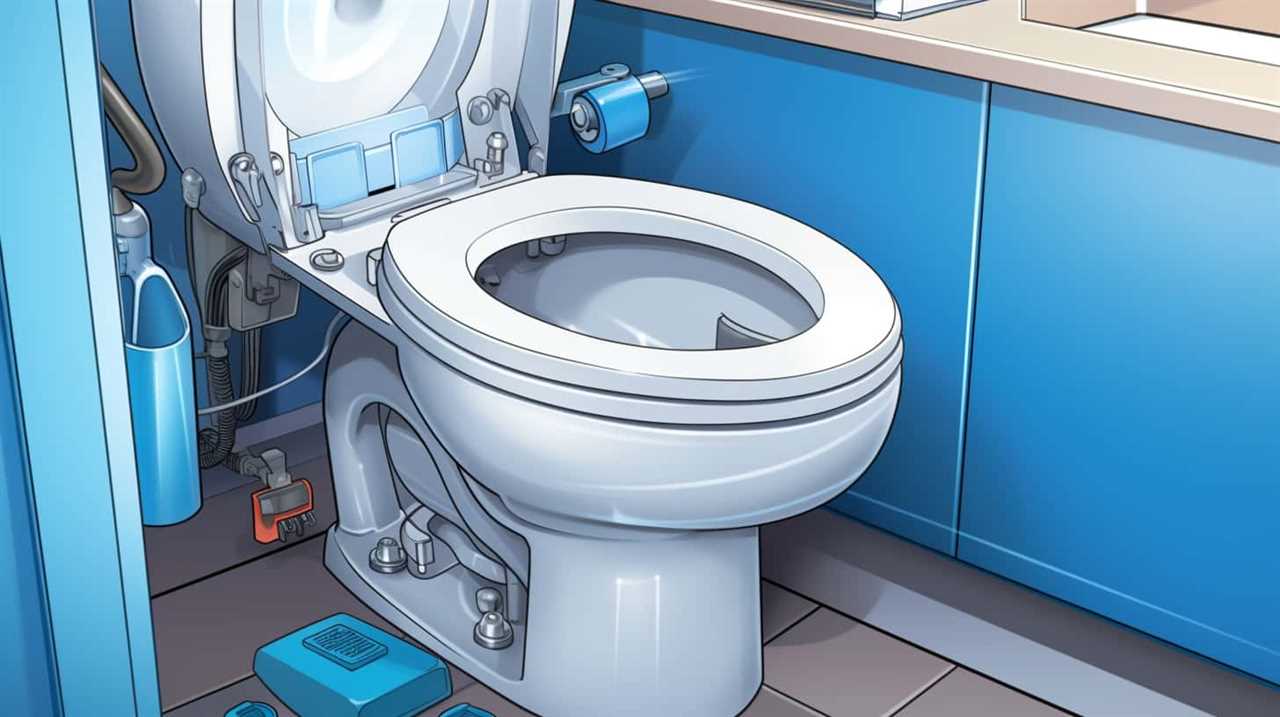
We are all aware that the toilet is a mysterious place where items vanish with a quick flush. However, it is important to remember, my friends, that not everything should be disposed of in this porcelain palace. Oh no.
In fact, there are some items that can cause serious damage to our plumbing and the environment.
So, let’s dive into the depths of toilet wisdom and find out exactly what we should not, I repeat, should not flush in the toilet.
Key Takeaways
- Non-biodegradable items such as plastic waste, disposable diapers, wrappers, bottles, and packaging should not be flushed as they can cause blockages in the sewage system and harm marine life.
- Personal hygiene products like tampons, pads, diapers, wipes, and condoms should not be flushed as they can lead to plumbing system blockages and backups.
- Medications and chemicals should not be flushed as they can contaminate water sources and harm aquatic life. They should be properly disposed of at local pharmacies or waste management facilities.
- Oils, grease, fat, paper towels, and wet wipes should not be flushed as they can cause plumbing system damage, contribute to pollution, and harm the environment. Proper disposal methods should be followed to prevent these issues.
Non-Biodegradable Items
When it comes to non-biodegradable items, we need to be mindful of what we flush down the toilet. Plastic waste and disposable diapers are two common examples that should never be flushed.

Plastic waste, such as wrappers, bottles, or packaging, can clog pipes and cause blockages in the sewage system. These items aren’t designed to break down in water and can lead to costly repairs.
Disposable diapers, although convenient, are made from materials that don’t biodegrade easily. Flushing them can lead to significant environmental problems, as they can end up in water bodies, harming marine life and polluting the ecosystem.
It’s crucial to dispose of these items properly in designated waste bins to prevent negative impacts on our plumbing systems and the environment as a whole.
Personal Hygiene Products
We should not flush personal hygiene products down the toilet. Flushing these products can cause blockages in the plumbing system, leading to costly repairs. Additionally, these products can have a detrimental impact on the environment. Proper disposal methods for personal hygiene products include throwing them in the trash or using designated disposal bins. It is important to remember that even if a product is labeled as "flushable," it does not mean it should be flushed. Flushing personal hygiene products can contribute to clogged sewer lines and sewage backups. To emphasize this point, consider the following table:
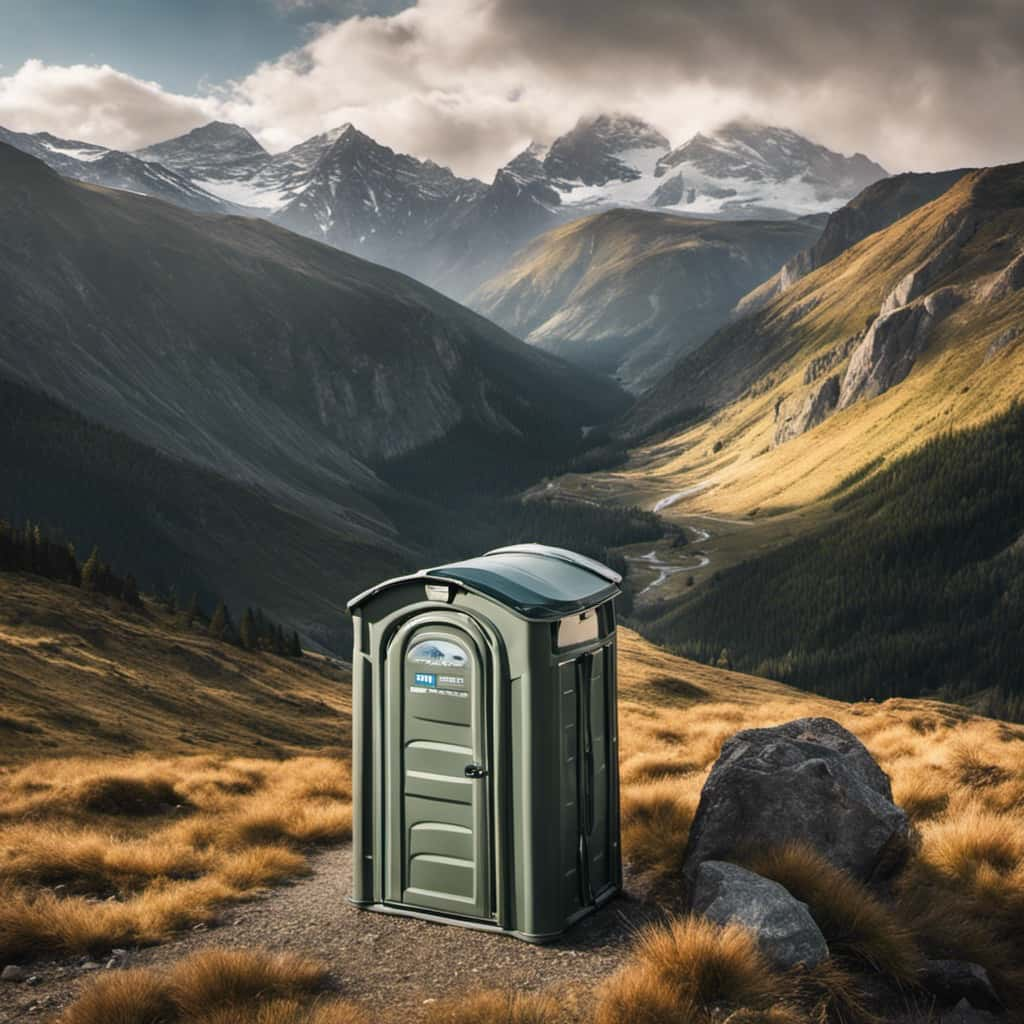
| Personal Hygiene Products |
|---|
| Tampons |
| Pads |
| Diapers |
| Wipes |
| Condoms |
Medications and Chemicals
In an article titled ‘What Should You Not Flush in the Toilet’, it’s important to address the issue of medications and chemicals that shouldn’t be flushed. Proper disposal of these substances is crucial to minimize their environmental impact and protect our water resources.
Here are three items that should never be flushed down the toilet:
- Medications: Flushing unused or expired medications can contaminate water sources, harming aquatic life and potentially affecting human health. Instead, take them to a local pharmacy or participating collection site for safe disposal.
- Household chemicals: Cleaning products, solvents, and pesticides should never be flushed as they can disrupt wastewater treatment processes and pollute rivers and lakes. Check with your local waste management facility for proper disposal methods.
- Personal care products containing chemicals: Items like tampons, diapers, and wet wipes shouldn’t be flushed, as they can cause blockages in sewer systems and contribute to pollution. Dispose of them in the trash instead.
Oils, Grease, and Fat
To prevent plumbing issues and protect the environment, it is important to properly dispose of oils, grease, and fat. These substances can cause significant damage to both your plumbing system and the environment when they are flushed down the toilet. When oils, grease, and fat enter the plumbing system, they can solidify and create blockages that can lead to costly repairs. Additionally, these substances can have a detrimental environmental impact when they enter sewage systems and waterways, causing pollution and harm to aquatic life. To help you understand the importance of proper disposal, here is a table outlining the environmental impact and potential plumbing problems caused by flushing oils, grease, and fat.
| Substance | Environmental Impact | Plumbing Problems |
|---|---|---|
| Oils | Can contaminate water sources and harm aquatic life | Clogs pipes and causes backups |
| Grease | Pollutes waterways and can be toxic to marine organisms | Solidifies in pipes and causes blockages |
| Fat | Contributes to water pollution and harms ecosystems | Accumulates in pipes and leads to sewer backups |
Paper Towels and Wet Wipes
Let’s talk about why flushing paper towels and wet wipes down the toilet is a bad idea. Not only does it have a negative environmental impact, but it can also cause serious plumbing issues.

Here are three reasons why you should never flush paper towels and wet wipes down the toilet:
- Environmental Impact: Flushing paper towels and wet wipes contributes to clogged sewer systems and can lead to sewage spills. These spills can contaminate our water sources and harm aquatic life. Additionally, these materials don’t break down like toilet paper, leading to increased waste in landfills.
- Plumbing Issues: Paper towels and wet wipes aren’t designed to dissolve in water like toilet paper. Flushing them down the toilet can clog pipes and cause blockages, leading to expensive repairs and potential damage to your plumbing system.
- Costly Consequences: Dealing with plumbing issues caused by flushing paper towels and wet wipes can be a costly affair. Not only will you need to hire a professional plumber to fix the problem, but you may also have to deal with water damage and the inconvenience of not having a functioning toilet.
To avoid these problems, dispose of paper towels and wet wipes in the trash instead of flushing them down the toilet.
Frequently Asked Questions
Can I Flush Non-Biodegradable Items Down the Toilet if They Are Small Enough?
We should never flush non-biodegradable items down the toilet, even if they are small. Doing so can cause potential plumbing issues such as clogs and blockages. It’s important to dispose of these items properly.
Why Can’t I Flush Personal Hygiene Products Down the Toilet?
Flushing personal hygiene products can have a negative environmental impact. It’s important not to flush them because they can clog pipes and sewage systems. Instead, dispose of them in the trash to avoid potential problems.
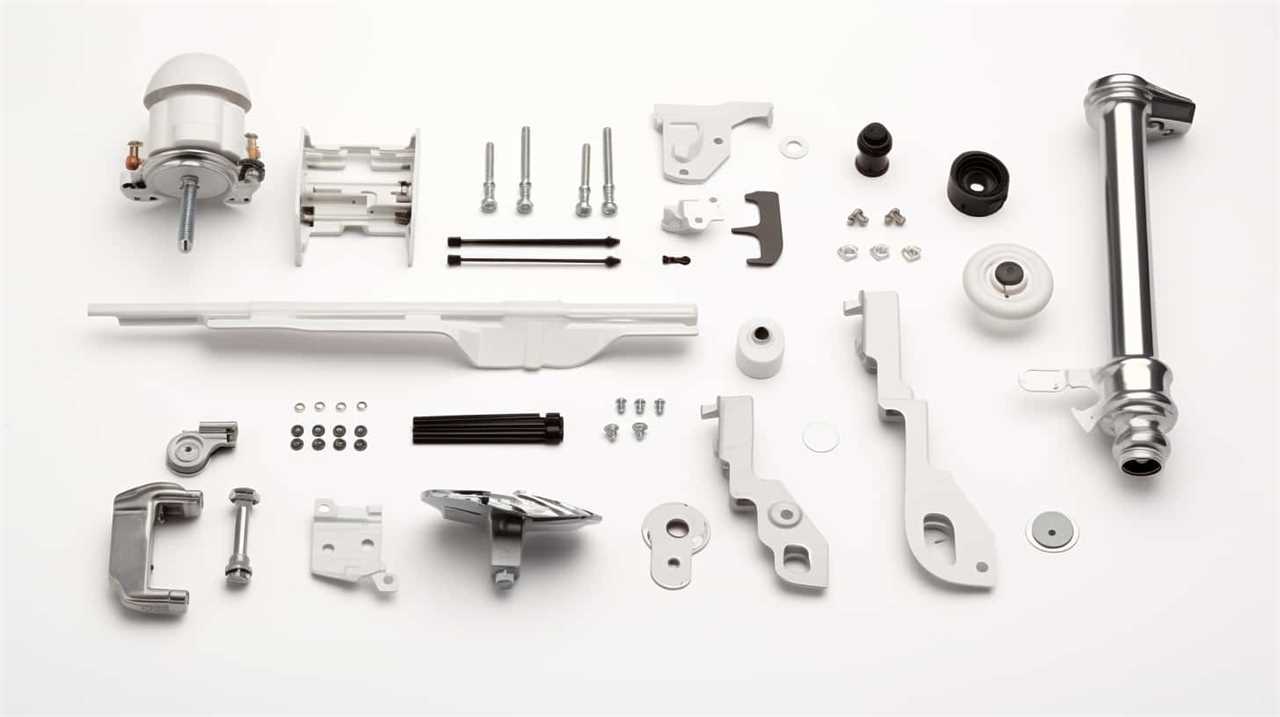
Is It Safe to Flush Medications and Chemicals Down the Toilet?
Flushing expired medications and chemicals down the toilet is not safe. Proper disposal is essential to protect both our environment and our health. Let’s explore the correct ways to dispose of these items.
Can Small Amounts of Oil, Grease, or Fat Be Safely Flushed Down the Toilet?
Flushing oils and chemicals can have a negative impact on the environment and sewage systems. It is important to avoid flushing non-biodegradable items to prevent clogs and contamination.
What Is the Difference Between Flushing Paper Towels and Wet Wipes and Flushing Toilet Paper?
Flushing paper towels and wet wipes may seem similar to flushing toilet paper, but the difference lies in their environmental impact. Non-biodegradable items like these can clog pipes and harm marine life. It’s best to dispose of them properly.
Conclusion
In conclusion, when it comes to flushing items down the toilet, it’s crucial to remember that not everything is meant to go down the drain.

Non-biodegradable items, personal hygiene products, medications and chemicals, oils, grease, fat, and paper towels and wet wipes should never be flushed. These items can cause blockages in the plumbing system and harm the environment.
So, let’s be mindful of what we flush, and keep our toilets and our planet healthy and happy.
With an impeccable eye for detail and a passion for bathroom-related, Ava leads our editorial team gracefully and precisely.
Under her guidance, Best Modern Toilet has flourished as the go-to resource for modern bathroom enthusiasts. In her free time, you might find Ava exploring antique shops and looking for vintage bathroom fixtures to add to her collection.
FAQ - Advanced Bathroom Queries
What Happens if You Flush the Toilet When the Water Softener Is Regenerating
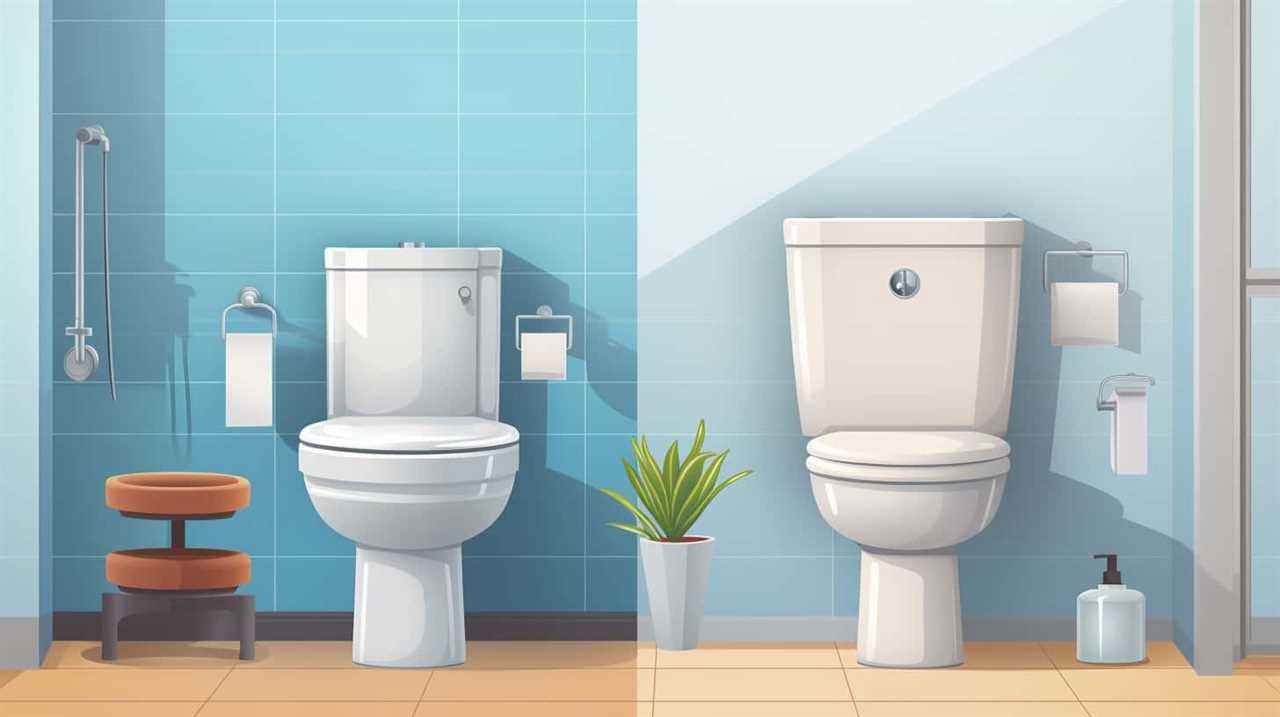
As water softening aficionados, we understand the significance of regular upkeep. But what occurs if we inadvertently flush the toilet while the water softener is regenerating?
Well, let us dive into the technicalities. Flushing the toilet during regeneration can lead to potential damage to the water softener system, reduced effectiveness of water softening, increased water hardness in the plumbing system, risk of clogging or backup, and an extended regeneration process with unnecessary water waste.
It’s vital to understand the consequences and avoid such missteps to ensure a mastery over water softening.
Key Takeaways
- Flushing the toilet during regeneration can cause potential damage to the water softener system.
- Water usage during regeneration reduces the effectiveness of water softening.
- Flushing the toilet during regeneration increases water hardness in the plumbing system.
- Flushing the toilet during regeneration poses a risk of clogging or backup in the plumbing.
Potential Damage to the Water Softener System
When flushing the toilet while the water softener is regenerating, potential damage to the water softener system can occur. This is because the regenerating process involves flushing out the accumulated minerals from the resin tank and replenishing it with fresh salt. Interrupting this process by flushing the toilet can disrupt the delicate balance and cause a potential system malfunction.

The impact on water quality can also be significant. The minerals that were meant to be removed during regeneration mightn’t be fully eliminated, leading to hard water issues. Additionally, the interruption can cause the system to overwork, potentially leading to excessive wear and tear on its components.
To avoid potential damage to the water softener system, it’s advisable to refrain from flushing the toilet during the regeneration process.
Reduced Effectiveness of Water Softening
How does flushing the toilet during water softener regeneration impact the effectiveness of water softening?
When the water softener is regenerating, it’s crucial to avoid using water in order to ensure optimal performance. Flushing the toilet during this process can lead to reduced effectiveness of water softening.

This is because the regeneration process involves flushing out the accumulated minerals and replacing them with new sodium ions. However, when water is used during this time, it disrupts the regeneration process, leading to incomplete removal of minerals from the resin bed.
As a result, the water may still contain hardness minerals, resulting in decreased soap lathering and increased scale buildup. Therefore, it’s important to avoid using water, including flushing the toilet, during the water softener regeneration process to maintain the effectiveness of water softening.
Increased Water Hardness in the Plumbing System
Flushing the toilet during water softener regeneration can result in an elevation of water hardness in the plumbing system. When the water softener is regenerating, it is temporarily unable to remove the minerals that cause water hardness. As a result, these minerals can enter the plumbing system and increase the water hardness. This can have several potential solutions, such as installing a bypass valve to divert water away from the water softener during regeneration. Additionally, it is important to consider the impact on appliances. Increased water hardness can lead to mineral buildup in appliances, reducing their efficiency and lifespan. Regular maintenance and descaling of appliances, such as dishwashers and washing machines, can help mitigate the effects of increased water hardness.
| Potential Solutions | Impact on Appliances |
|---|---|
| Install bypass valve | Mineral buildup |
| Divert water during regeneration | Reduced efficiency |
| Regular appliance maintenance | Decreased lifespan |
Risk of Clogging or Backup in the Plumbing
During water softener regeneration, there’s a risk of clogging or backup in the plumbing system. The water softener goes through a cleaning cycle where it flushes out accumulated minerals. This can cause a temporary increase in water flow and pressure. This increase in pressure can strain weak or damaged pipes, potentially causing leaks or bursts. The high water flow can also dislodge debris or sediment in the pipes, blocking the water flow. To minimize the risk, it’s important to avoid using water-dependent appliances during the regeneration process. Following the recommended maintenance schedule and ensuring proper installation and functioning of the system can help mitigate this risk.

Now, let’s move on to discussing the extended regeneration process and water waste.
Extended Regeneration Process and Water Waste
As we continue our discussion on the risks of clogging or backup in the plumbing system during water softener regeneration, let’s now explore the extended regeneration process and the issue of water waste.
During the extended regeneration process, the water softener goes through several cycles to clean and recharge the resin beads. This process typically takes a couple of hours to complete. However, it’s important to note that during this time, the water softener isn’t able to supply softened water to the household.
Additionally, the extended regeneration process can result in a significant amount of water waste. It’s estimated that for every regeneration cycle, approximately 50-100 gallons of water can be wasted. This not only impacts water bills but also raises concerns about the environmental impact and the overall efficiency of the water softener system.

Therefore, proper water softener maintenance and scheduling can help minimize the impact on water quality and reduce water waste.
Frequently Asked Questions
Can Flushing the Toilet During the Water Softener Regeneration Process Cause Any Harm to the Toilet Itself?
Flushing the toilet during water softener regeneration can potentially cause toilet damage. It is advised to avoid doing so to ensure water softener efficiency and prevent any potential harm to the toilet.
Will the Water Softener Still Work Effectively After Flushing the Toilet During Regeneration?
After flushing the toilet during water softener regeneration, the effectiveness of the softener may be compromised. This can lead to a decrease in water pressure and a potential impact on water quality.
Is There a Risk of Increased Water Hardness in Other Household Appliances, Such as the Dishwasher or Washing Machine, if the Toilet Is Flushed During Regeneration?
Flushing the toilet during water softener regeneration may affect water pressure and potentially shorten the lifespan of the water softener. Increased water hardness in appliances like the dishwasher or washing machine is possible.

Can Flushing the Toilet During Regeneration Lead to Clogging or Backup in Other Areas of the Plumbing System, Such as Sinks or Showers?
When the toilet is flushed during water softener regeneration, it can potentially cause clogging or backup in other areas of the plumbing system, such as sinks or showers. It’s important to prevent this to maintain proper water pressure.
Does Flushing the Toilet During the Regeneration Process Extend the Overall Length of the Regeneration and Result in More Water Waste?
Flushing the toilet during water softener regeneration can impact water pressure. It may result in potential damage to the water softener and increase the length of regeneration, leading to more water waste.
Conclusion
If you flush the toilet during the water softener regeneration process, you could potentially cause damage to the system. This can reduce the effectiveness of water softening and increase water hardness in your plumbing system. Additionally, flushing the toilet during regeneration can risk clogging or backup in your pipes. This can lead to costly repairs and inconvenience. Furthermore, flushing the toilet during regeneration can also result in wasting water. It’s important to be mindful of the regeneration schedule and avoid flushing the toilet during this time to maintain the optimal functioning of your water softener and prevent any potential issues.
With an impeccable eye for detail and a passion for bathroom-related, Ava leads our editorial team gracefully and precisely.
Under her guidance, Best Modern Toilet has flourished as the go-to resource for modern bathroom enthusiasts. In her free time, you might find Ava exploring antique shops and looking for vintage bathroom fixtures to add to her collection.
FAQ - Advanced Bathroom Queries
Where Can You Not Flush Toilet Paper

We’ve all experienced it – facing a toilet, pondering whether we should flush that bundle of toilet paper or not.
Well, here’s a surprising fact: in some places, you can’t flush it at all! From public restrooms to older plumbing systems, there are several situations where tossing that tissue down the drain is a big no-no.
In this article, we’ll explore where you can and can’t flush toilet paper, so you never find yourself in a messy situation again.
Key Takeaways
- Flushing toilet paper in public restrooms can have severe environmental impacts, clog pipes, and strain wastewater treatment facilities.
- Older plumbing systems may not be able to handle flushing toilet paper, leading to clogging and backups in the pipes.
- Many countries with inadequate sewage infrastructure cannot handle flushing toilet paper, leading to clogged pipes, sewage backups, and contaminated water sources.
- Flushing non-biodegradable items can cause blockages in septic systems and disrupt the natural balance of the tank, so it is important to use waste bins and properly dispose of hazardous materials.
Public Restrooms
In public restrooms, it’s important to remember that toilet paper shouldn’t be flushed in certain situations. Proper hygiene practices in public restrooms require us to dispose of toilet paper appropriately. Flushing toilet paper may seem convenient, but it can have severe environmental impacts.

When flushed, toilet paper can clog pipes and sewage systems, causing costly repairs and potential health hazards. Additionally, flushing toilet paper contributes to water pollution and strain on wastewater treatment facilities. By not flushing toilet paper in public restrooms, we can help conserve water, reduce maintenance costs, and protect the environment.
Instead, it’s recommended to use the provided waste bins for proper disposal. Let’s all be mindful of our actions and practice responsible hygiene practices in public restrooms for the benefit of ourselves and the environment.
Older Plumbing Systems
Our older plumbing systems may not be able to handle the flushing of toilet paper. This is due to their historical significance and the environmental impact it can have.
Many older buildings still have outdated plumbing systems that weren’t designed to handle the modern use of toilet paper. These systems were built at a time when people used alternative methods such as bidets or reusable cloths.

Flushing toilet paper in these older systems can lead to clogging and backups in the pipes, causing costly repairs and potential damage to the environment. It’s important to be aware of the limitations of these older plumbing systems and to dispose of toilet paper in the appropriate waste receptacles to prevent any issues.
Countries With Inadequate Sewage Infrastructure
Many countries around the world have inadequate sewage infrastructure that cannot handle the flushing of toilet paper. This poses significant challenges for hygiene practices and has a severe environmental impact. In countries where the sewage infrastructure is inadequate, flushing toilet paper can lead to clogged pipes, sewage backups, and contaminated water sources.
To illustrate the severity of the issue, let’s take a look at the table below, which highlights a few countries facing this problem:
| Country | Hygiene Practices Affected | Environmental Impact |
|---|---|---|
| Haiti | Limited access to clean water and sanitation facilities | Contamination of water sources and increased risk of diseases |
| India | Lack of proper sanitation facilities in rural areas | Pollution of rivers and groundwater |
| Cambodia | Insufficient sewage treatment plants | Water pollution and degradation of ecosystems |
It’s clear that the inadequate sewage infrastructure in these countries not only poses challenges to hygiene practices but also has a detrimental impact on the environment. Efforts should be made to improve and upgrade the sewage systems to ensure proper waste management and protect public health.
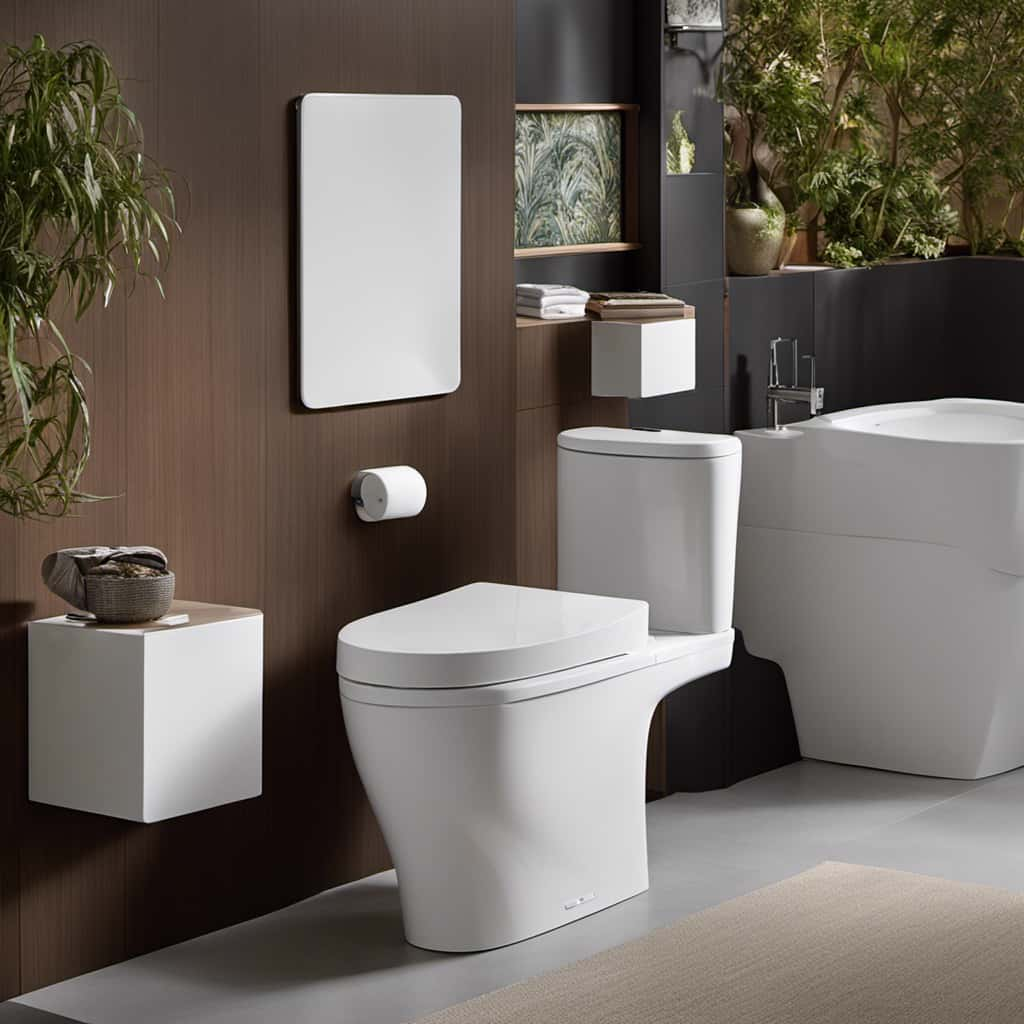
Portable Toilets
Moving forward from the discussion on countries with inadequate sewage infrastructure, let’s now explore the topic of portable toilets and their role in addressing the challenges related to proper waste management and hygiene practices.
Portable toilets play a crucial role in providing sanitation solutions in various situations. Here are four key points to consider:
- Temporary Events: Portable toilet rental is essential for outdoor events like concerts, festivals, and sports matches. They ensure that attendees have access to clean and convenient restroom facilities.
- Construction Sites: Portable toilets are commonly used on construction sites where permanent facilities are unavailable. They help maintain proper hygiene practices and ensure the well-being of workers.
- Disaster Relief: During natural disasters or emergencies, portable toilets are vital in providing immediate sanitation solutions in affected areas, preventing the spread of diseases.
- Outdoor Activities: Whether it’s camping, hiking, or boating, portable toilets are essential for maintaining cleanliness and hygiene in remote outdoor locations.
Septic Tanks
Let’s now delve into the topic of septic tanks and their role in addressing waste management and hygiene practices, particularly in relation to portable toilets.
Septic tanks play a crucial role in waste disposal and treatment, providing an efficient and eco-friendly solution for waste management. When it comes to portable toilets, septic tanks are often used to collect and store waste until it can be properly disposed of or treated.
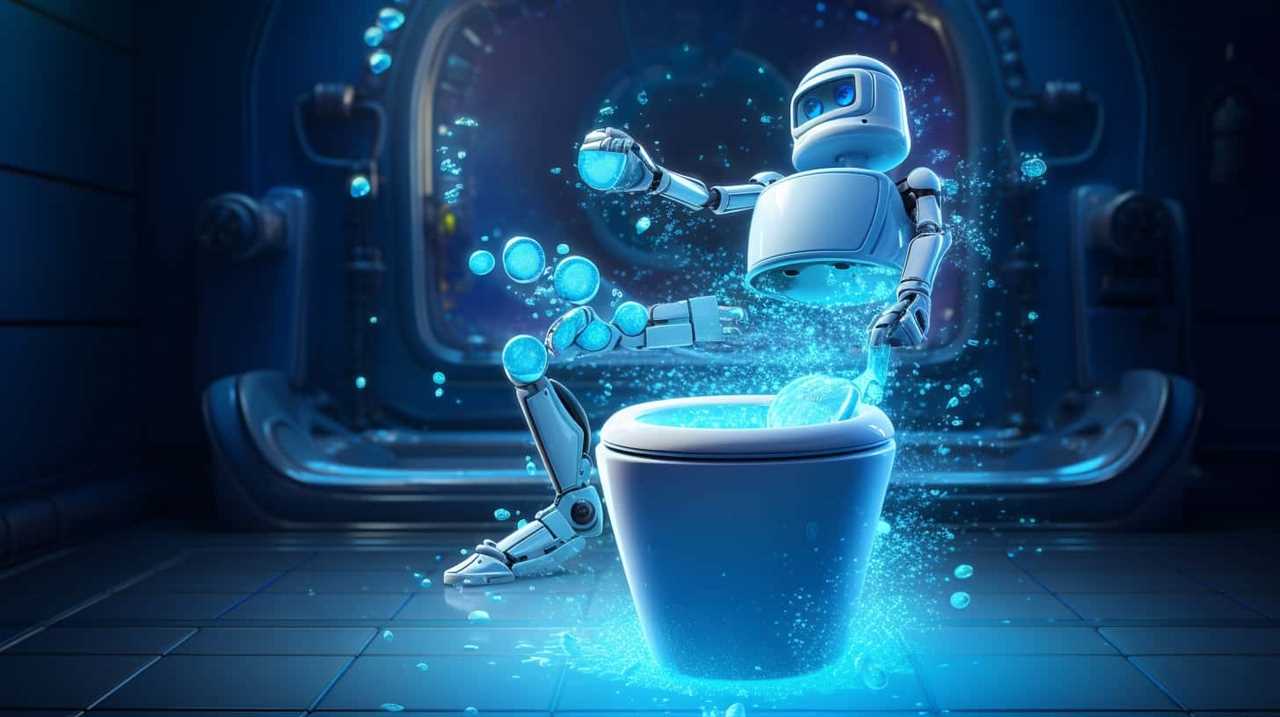
One of the key considerations with septic tanks is their environmental impact. Properly maintained septic tanks can minimize the release of harmful substances into the environment, protecting both human health and ecosystems.
Maintenance requirements for septic tanks include regular pumping, inspection, and proper use of additives to promote the breakdown of organic waste. By adhering to these maintenance practices, septic tanks can effectively manage waste and maintain a healthy environment.
Frequently Asked Questions
How Often Should Public Restrooms Be Cleaned to Ensure Proper Hygiene and Prevent the Spread of Diseases?
We clean public restrooms frequently to maintain proper hygiene and prevent the spread of diseases. Our disease prevention measures include regular cleaning, disinfecting surfaces, and ensuring adequate supply of soap and hand sanitizers.
What Are Some Alternative Options for Disposing of Toilet Paper in Areas With Older Plumbing Systems?
In areas with older plumbing systems, waste disposal can be a challenge. However, there are environmentally friendly alternatives to flushing toilet paper. Let’s explore some options for proper disposal that won’t harm the plumbing.
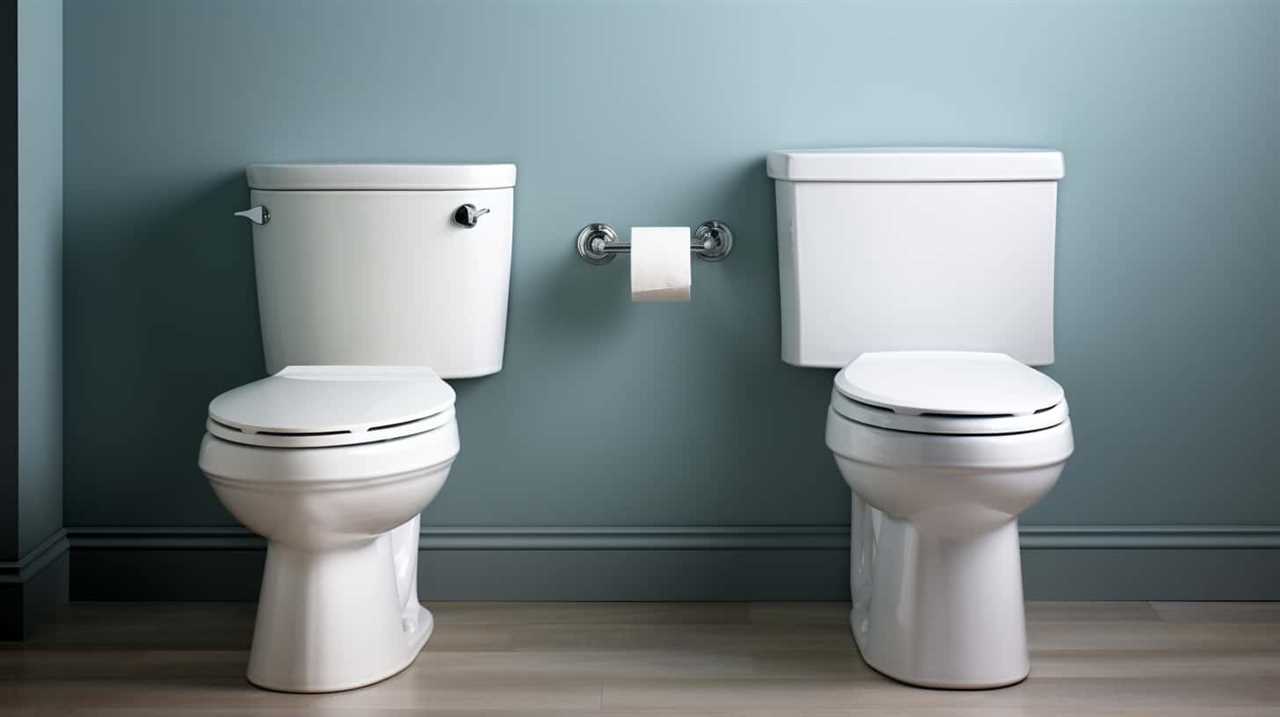
Can You Provide a List of Countries With the Most Advanced Sewage Infrastructure?
A list of countries with the most advanced sewage infrastructure includes Japan, Germany, and Singapore. These countries have invested in modern technology to efficiently manage wastewater. Bidets are another alternative to toilet paper, with benefits like improved hygiene and reduced environmental waste.
How Are Portable Toilets Emptied and Maintained to Ensure Proper Sanitation?
When it comes to portable toilet maintenance, ensuring proper disposal of waste is crucial. We take the responsibility seriously, employing strict protocols to empty and maintain portable toilets, guaranteeing optimal sanitation for everyone.
What Are the Common Problems That Can Occur With Septic Tanks and How Can They Be Prevented or Resolved?
Common septic tank problems include blockages, leaks, and overflows. Regular septic tank maintenance, such as pumping and inspecting, can help prevent these issues. It’s important to follow proper waste disposal guidelines to avoid further complications.
Conclusion
In conclusion, while it may seem strange to some, there are various places where flushing toilet paper isn’t advisable. Public restrooms, older plumbing systems, countries with inadequate sewage infrastructure, portable toilets, and septic tanks all fall into this category.
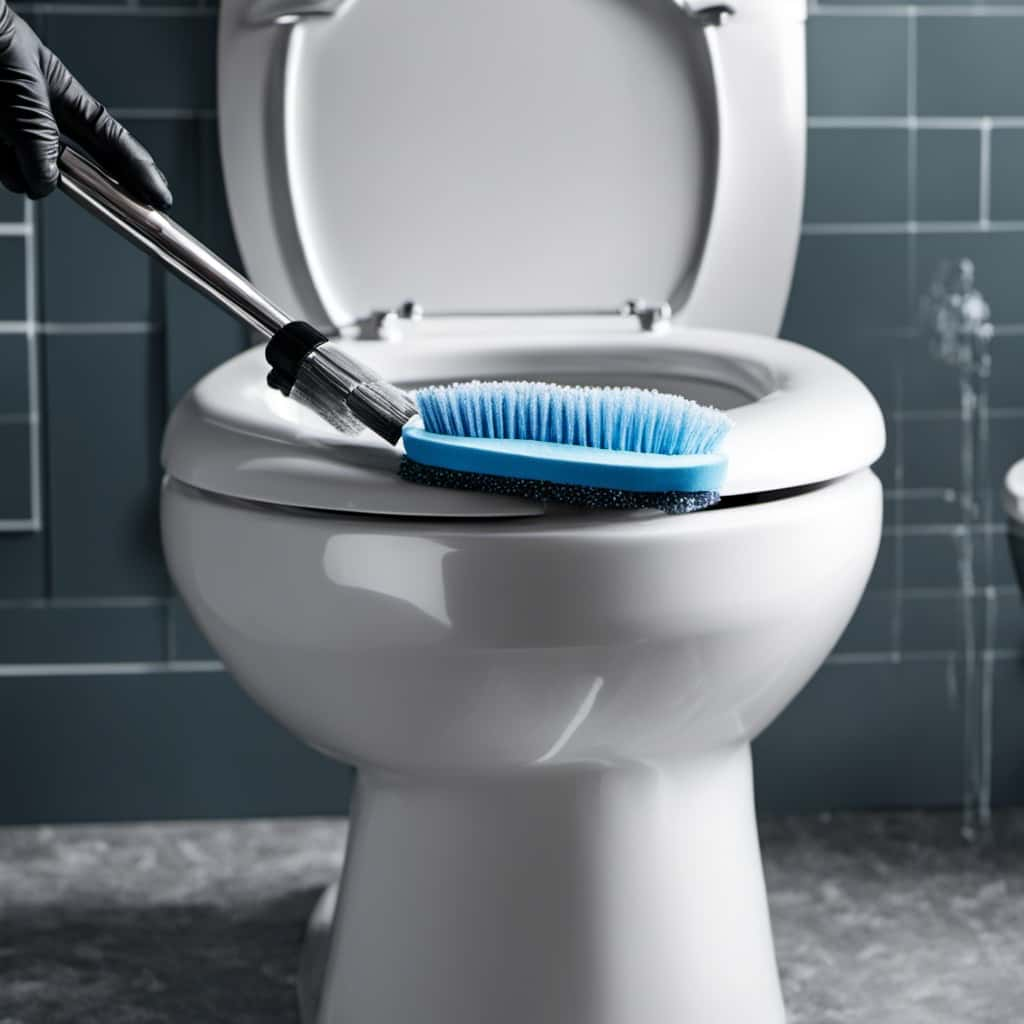
It’s crucial to be mindful of these restrictions to prevent clogging and damage to the plumbing systems. So next time you find yourself in one of these situations, remember to dispose of your toilet paper properly and help keep the pipes flowing smoothly.
With an impeccable eye for detail and a passion for bathroom-related, Ava leads our editorial team gracefully and precisely.
Under her guidance, Best Modern Toilet has flourished as the go-to resource for modern bathroom enthusiasts. In her free time, you might find Ava exploring antique shops and looking for vintage bathroom fixtures to add to her collection.
-

 Bathroom Enhancements2 months ago
Bathroom Enhancements2 months agoWill Hot Bath Lower Blood Pressure
-

 FAQ - Advanced Bathroom Queries3 months ago
FAQ - Advanced Bathroom Queries3 months agoWhich Countries Use Bidets the Most
-

 Reviews1 month ago
Reviews1 month agoLDian Smart Toilet Review [2024]
-

 Reviews2 months ago
Reviews2 months agoKohler Innate Smart Toilet Review [2024]
-

 Reviews2 months ago
Reviews2 months agoKohler NUMI 2.0 Smart Toilet Review [2024]
-

 Reviews2 months ago
Reviews2 months agoCANEST Smart Toilet Review: The Ultimate Bathroom Upgrade [2024]
-

 Toilet Types3 months ago
Toilet Types3 months agoAre Bleach Tablets Bad for Your Toilet
-

 Reviews2 months ago
Reviews2 months agoWoodbridge B0970S Smart Bidet Toilet Review [2024]






















